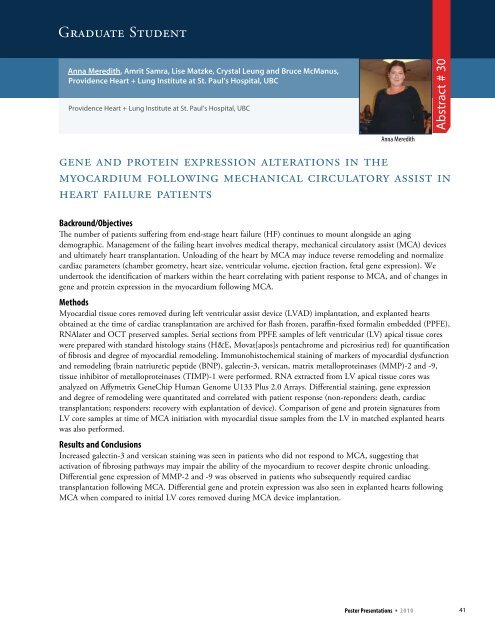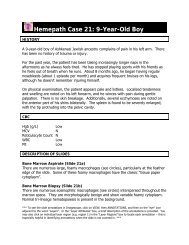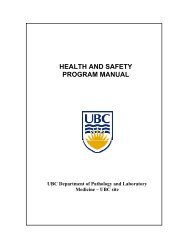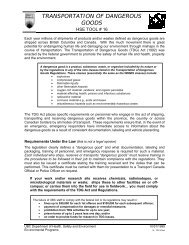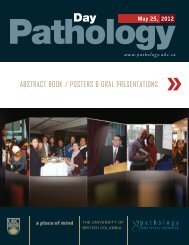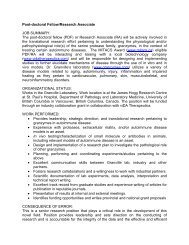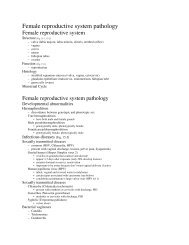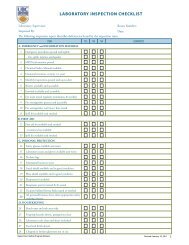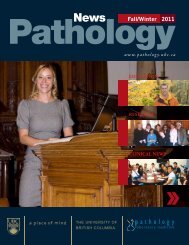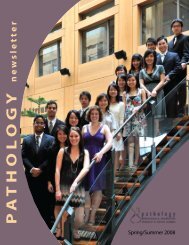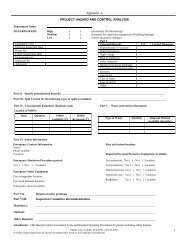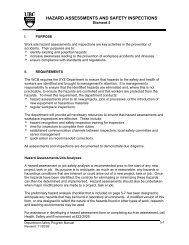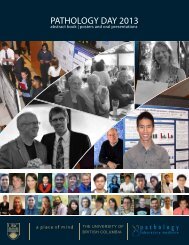Oral Presentations - Pathology and Laboratory Medicine - University ...
Oral Presentations - Pathology and Laboratory Medicine - University ...
Oral Presentations - Pathology and Laboratory Medicine - University ...
Create successful ePaper yourself
Turn your PDF publications into a flip-book with our unique Google optimized e-Paper software.
Graduate StudentAnna Meredith, Amrit Samra, Lise Matzke, Crystal Leung <strong>and</strong> Bruce McManus,Providence Heart + Lung Institute at St. Paul’s Hospital, UBCProvidence Heart + Lung Institute at St. Paul’s Hospital, UBCAbstract # 30Anna Meredithgene <strong>and</strong> protein expression alterations in themyocardium following mechanical circulatory assist inheart failure patientsBackround/ObjectivesThe number of patients suffering from end-stage heart failure (HF) continues to mount alongside an agingdemographic. Management of the failing heart involves medical therapy, mechanical circulatory assist (MCA) devices<strong>and</strong> ultimately heart transplantation. Unloading of the heart by MCA may induce reverse remodeling <strong>and</strong> normalizecardiac parameters (chamber geometry, heart size, ventricular volume, ejection fraction, fetal gene expression). Weundertook the identification of markers within the heart correlating with patient response to MCA, <strong>and</strong> of changes ingene <strong>and</strong> protein expression in the myocardium following MCA.MethodsMyocardial tissue cores removed during left ventricular assist device (LVAD) implantation, <strong>and</strong> explanted heartsobtained at the time of cardiac transplantation are archived for flash frozen, paraffin-fixed formalin embedded (PPFE),RNAlater <strong>and</strong> OCT preserved samples. Serial sections from PPFE samples of left ventricular (LV) apical tissue coreswere prepared with st<strong>and</strong>ard histology stains (H&E, Movat[apos]s pentachrome <strong>and</strong> picrosirius red) for quantificationof fibrosis <strong>and</strong> degree of myocardial remodeling. Immunohistochemical staining of markers of myocardial dysfunction<strong>and</strong> remodeling (brain natriuretic peptide (BNP), galectin-3, versican, matrix metalloproteinases (MMP)-2 <strong>and</strong> -9,tissue inhibitor of metalloproteinases (TIMP)-1 were performed. RNA extracted from LV apical tissue cores wasanalyzed on Affymetrix GeneChip Human Genome U133 Plus 2.0 Arrays. Differential staining, gene expression<strong>and</strong> degree of remodeling were quantitated <strong>and</strong> correlated with patient response (non-reponders: death, cardiactransplantation; responders: recovery with explantation of device). Comparison of gene <strong>and</strong> protein signatures fromLV core samples at time of MCA initiation with myocardial tissue samples from the LV in matched explanted heartswas also performed.Results <strong>and</strong> ConclusionsIncreased galectin‐3 <strong>and</strong> versican staining was seen in patients who did not respond to MCA, suggesting thatactivation of fibrosing pathways may impair the ability of the myocardium to recover despite chronic unloading.Differential gene expression of MMP-2 <strong>and</strong> -9 was observed in patients who subsequently required cardiactransplantation following MCA. Differential gene <strong>and</strong> protein expression was also seen in explanted hearts followingMCA when compared to initial LV cores removed during MCA device implantation.Poster <strong>Presentations</strong> * 2 0 1 041


